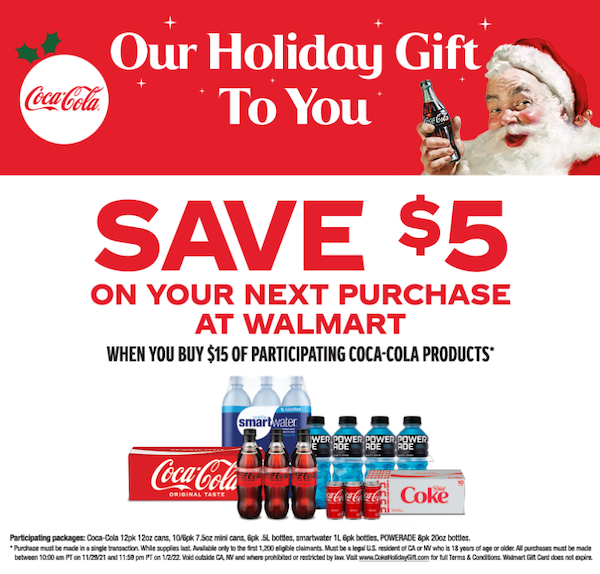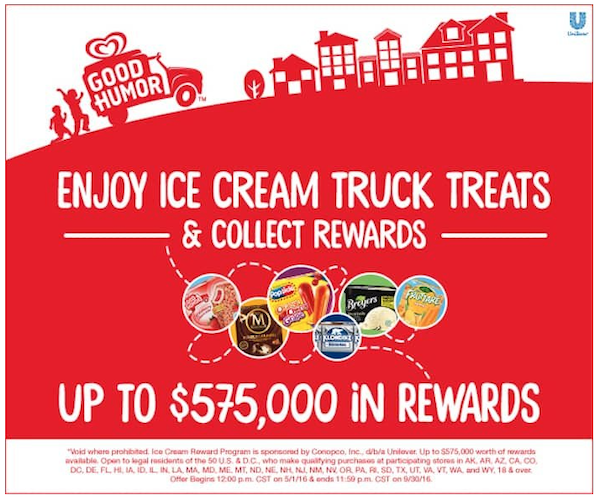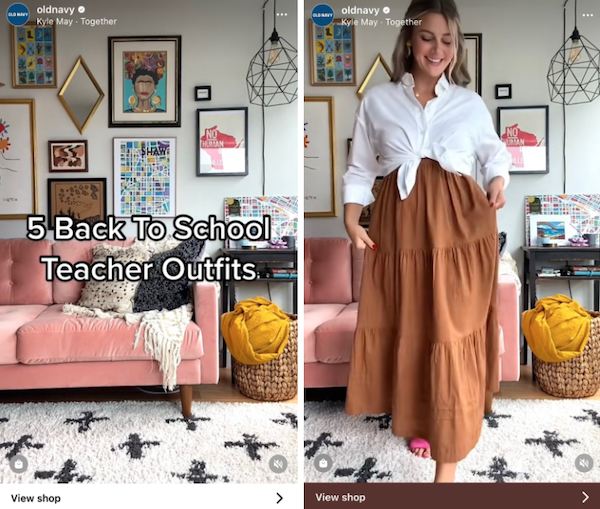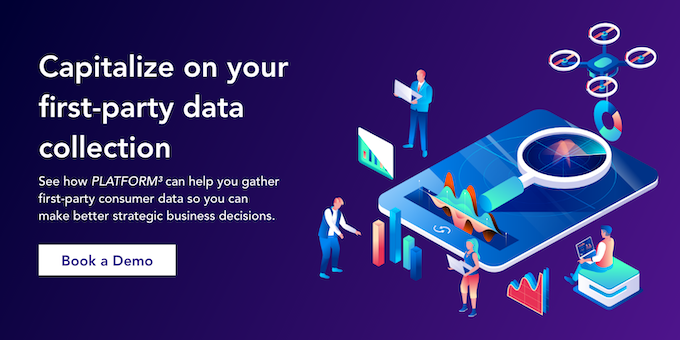What is Generational Marketing? (Adapted)
Why is it important to understand the way your customers shop? In order to build meaningful relationships with consumers that draw brand engagement and boost conversions, brands need to gain insight into their customers’ behaviours and preferences. One of the biggest challenges brands face is knowing who their customers are and what actions they take. Segmenting consumers by factors such as age, gender, geographic location, or cultural background is helpful for brands to gain insight into how those meaningful relationships need to be pursued. There are endless ways of segmenting consumers, but the right formula can provide valuable information to help brands understand how their customers shop. What if brands segmented customers by their generation?
Unsurprisingly, individuals born in different generations generally think and behave differently as consumers. This is because each generation experiences unique struggles or world events that shape their perspective on life. Some might be more likely to sign up for a loyalty program, whereas others may be less likely to shop in-store. Consumers' mindsets can be influenced or even defined by which generation they belong to. Rather than focusing on one single data point, generational segmentation provides marketers with a well-rounded customer profile. How can brands use generational marketing to build a framework for their marketing strategy?
What is Generational Marketing?
Within generational marketing, customers are segmented and targeted according to the generation they fall into, determined by the year they were born. We currently have four main generations: Baby Boomers, Generation X (Gen X), Generation Y (Millennials), and Generation Z (Gen Z). In this article, there will also be a special mention of the youngest generation, Generation Alpha (Gen C), as they are quickly becoming more relevant. Each generation carries its own beliefs, preferences, and shared experiences, which influence how they think and act. For example, cultural and sociopolitical factors such as technological developments and financial instability, are some of the biggest drivers of influence.
The perspectives held by each generation play a large role in who they are as consumers. For example, Millennials were the slowest to recover from the Great Recession, with their median wealth level being 34% below older generations when they were a similar age. This could mean that some are more likely to save for retirement than spend their disposable income due to financial anxiety. 65% of Gen Zers grew up with social media and have purchased something based on an influencer’s recommendation. Some might respond well to innovations, while others prefer that their products and services stay the same.
Generational marketing shouldn’t be a company’s only consideration when segmenting their customers. Other factors like location, income, and individual interests are valuable data points. However, generational marketing can offer a strong foundation for designing and analyzing personalized marketing campaigns that help create fully-developed future strategies.
Generation-by-Generation Breakdown
Baby Boomers
Characteristics
Baby Boomers were born in the mid-1940s to the early 1960s. As a post-war generation, Baby Boomers grew up in a time of prosperity and economic growth. Of all the generations, they hold the most purchasing power and have the most discretionary income. They’ve spent much of their lives without modern technology, but that hasn’t stopped many from embracing mobile devices, social media, and online shopping.
Today, most baby boomers are empty nesters that are either retired or close to retirement. They no longer need to save money to pay for their education, mortgage, or family. While some spend freely on luxury goods, others are more frugal due to recent economic instability reminding them of the high inflation and interest rates of the 1980s. Baby Boomers are highly motivated by good deals and are very brand loyal.
Strategies
People often assume that traditional marketing methods like print ads or television commercials are the best way to market to Baby Boomers. However, many of them have smartphones, tablets, and Facebook accounts. The best ways to appeal to this generation are through coupons, special offers, and email marketing campaigns.
Brands like Coca-Cola have successfully marketed their products to discount-driven baby boomers through gift with purchase programs, such as their ‘$5 Holiday Walmart’ gift with purchase promotion. When consumers purchase $15 worth of qualifying Coca-Cola products in one transaction from Walmart, they are eligible to receive a $5 Walmart digital gift card. Since both Coca-Cola and Walmart have been trusted brands for decades, this partnership had a unique opportunity to appeal to baby boomers’ brand loyalty. This program also worked well for baby boomers who wanted to take advantage of a special offer for a brand they trust.
On the other hand, Zoom informed baby boomers about their special offer through email campaigns. For a limited time, they offered consumers a 30% discount on their annual premium plan, which allows users to host online video calls longer than 40 minutes. The email’s simple layout, large text, and contrasting colors made it easy to digest and understand exactly what was being offered and where to get it.
Generation X
Characteristics
Generation X, or Gen X, refers to people born in the mid-1960s to the early 1980s. Gen Xers are often overlooked being both the smallest generation and the bridge between Baby Boomers and Millennials. Unlike their parents, this generation grew up in a recession, meaning they've learned to be cautious with money their entire lives. They're also typically more skeptical, meaning they trust companies and their marketing efforts less than other generations.
Today, Gen Xers are hesitant about change and new innovations and prefer to stick to what they know, making them the most brand-loyal generation. They also respond well to companies that leverage nostalgia, such as marketing campaigns featuring celebrities or music they associate with their childhood.
Strategies
As the most brand-loyal generation, Gen X responds best to customer loyalty programs. When their favorite brands offer discounts and reward points, they’re more likely to make additional purchases so they can save money in the long run. They’re also more active than Baby Boomers on social media platforms like Facebook. Considering this, Facebook ads and pages, especially with customer reviews, are some of the best ways to keep them up-to-date on new products and deals.
Promotions like Vachon Market’s Consumer Rewards Loyalty Program help reinforce Gen Xers’ loyalty to brands they love. In this program, consumers earned points by purchasing qualifying Vachon products, participating in spin-and-wins, answering surveys and quizzes, entering sweepstakes and contests, and inviting others to participate in the program. Consumers were encouraged to collect points in order to redeem rewards such as brand merchandise or entries into contests and sweepstakes.
CozyEarth appealed to Gen X through sharing a relatable customer review from the Oprah Magazine through a Facebook ad. The sample product and its review especially helped to capture consumers’ interest, as Gen Xers typically trust customer reviews and their honest opinions more than brand marketing campaigns. Additionally, Oprah is a trusted and familiar voice amongst GenXers, so her having this product as one of her “favorite things” for 4 years in a row carries more weight for this generation than it would for a younger generation.
Millennials
Characteristics
Generation Y, also known as Millennials, refer to individuals born in the mid-1980s to the mid-1990s. They were the first generation to grow up with modern technology. Millennials are not only the largest demographic in the workforce but the largest generation in history. This presents an opportunity for brands to market to a wider audience and build a large customer base. Millennials are generally more likely to spend than save and prefer value over convenience.
Today, Millennials are the most talked-about generation across every industry. They place more importance on authentic brand messaging than previous generations, and specifically seek out brands that are socially and environmentally conscious. Milennials also prefer user-generated content over marketing campaigns, and 82% value word-of-mouth advertising from family, friends, and influencers above other strategies because they value peer acceptance and social advocacy. Lastly, when it comes to consumer packaged goods, they prefer brands that have consistently low prices over those that constantly offer deals.
Strategies
Millennials have gone from being the most brand loyal to one of the least brand loyal generations in recent years. They tend to switch brands depending on price and customer service changes, and care less about selection and convenience. The best way to keep them engaged with your brand is through SMS marketing, social media, and user-generated content. They’re also more likely to remain loyal to brands that donate to charitable causes and offer memorable experiences they can share with their social media following and loved ones.
One example of an SMS-based promotion that appealed to millennials was the Good Humor Ice Cream SMS Program. When consumers purchased $20 worth of qualifying Good Humor products from participating retailers, they were eligible to receive a $5 digital reward. Consumers were to text a picture of their receipt, as well as their city-specific promotion keyword (i.e. ‘GOODHUMORLOVESNYC’, ‘GOODHUMORLOVESBOSTON’, ‘GOODHUMORLOVESDC’, or ‘GOODHUMORLOVESMIAMI’), to a shortcode. Then, they receive an SMS message asking to confirm their birthday. Once their purchase has been validated, customers receive their $5 digital reward and instructions on how to redeem it.
On the other hand, Old Navy often posts user-generated content on its Instagram feed. Here, the clothing brand featured a teacher wearing five different back-to-school outfits. Since Millennials value authentic brand messaging, sharing user-generated content is a great way to engage this generation because it shows how real people use the products the brand sells.
Generation Z
Characteristics
Generation Z, or Gen Z, refers to people born from the mid-1990s to 2010. Currently, Gen Z is both the most diverse and the most tech-savvy generation. While many of them are still young, they already hold significant global spending power. Due to economic uncertainty stemming from the Great Recession and the COVID-19 pandemic, they value financial stability above all else and are responsible spenders.
Today, Gen Z relies more on reviews, recommendations, and social media than any other generation. They engage best with brands that utilize social selling techniques and actively respond to their comments and feedback. While they do experience significant stress about personal debt and look for ways to save money, they’re less likely to sign up for loyalty programs compared to Gen X.
Strategies
Despite being money-conscious, Gen Z cares less about finding deals and more about finding brands who share their beliefs. Even more so than millennials, they’re more likely to show loyalty to environmentally and socially responsible companies than those that don’t engage in ethical issues. They also want brands to engage with them as individuals and offer personalized products and experiences that help them express themselves.
Brands like Tentree give Gen Z the opportunity to purchase products and contribute to a cause they believe in simultaneously. When consumers buy Tentree products, the brand promises to plant ten trees. Tentree does this to make an effort to regenerate ecosystems, capture carbon, and provide planting jobs in communities around the world. All of their products are made in fair, safe working conditions, and constructed using only sustainably sourced and recycled materials. Tentree attracts Gen Z consumers because they invite their customers to be a part of something bigger than themselves.
Spotify, a music streaming service, is best known for its “Discover Weekly” playlists of personalized recommendations, allowing Gen Z to find new music similar to what they already listen to. They also recently launched its “Only You” campaign, which gave consumers a personalized summary of their listening habits. These unique cards were designed to be easily shared on social media.
Generation Alpha
Characteristics
Generation Alpha is the youngest existing generation and refers to individuals born after 2010. Although young, this generation will quickly grow into teenagers with agency, influence, and purchasing power. They have been accurately nicknamed Generation COVID or Gen C because of how much the global pandemic has shaped their perspectives of the world. Gen C has been majorly affected by living in a world that is reliant on technology. The oldest members of this generation were born the same year the iPad was released, which has now become a staple for many households. Additionally, Gen C is greatly influenced by Gen Z content creators they find on social media. By 2025, this generation is projected to be the largest generation in history with over 2 billion people.
Strategies
Considering that Gen C is still 12 years old and younger, it will be important to think of their Millennial parents when targeting them. For example, utilizing Gen C’s interests through user-generated content might be a great way to draw in Millennial parents with Gen C children, as 70% of parents say they have made purchases influenced by their child’s favourite show or character. Another factor to keep in mind is that screen time has significantly risen for Gen C children due to many of their usual activities being done virtually as a result of the global pandemic. Lastly, Gen C is hyper-aware of social issues and will likely want to engage with brands that aim to make a tangible difference in the world.
American Girl, a doll company, sells a variety of themed dolls and doll accessories. One of their doll features is called “World by Us”, in which dolls represent different life purposes. One doll is named Evette Peeters, who represents a biracial girl that lives by the Anacostia River in the United States and deeply cares about protecting the environment. Dolls like this appeal to Gen C’s desire to tackle issues global issues such as climate change or environmental sustainability.
Additional Considerations for Generational Marketing
Pros and Cons
Generational marketing provides a strong framework for companies to build on. Unlike segmenting by demographics such as gender or location, generational segmentation creates a more complete picture of target markets on their path to purchase. It helps companies determine where to find them, how to communicate with them, and how to turn them into loyal customers. For example, if a product is primarily designed for younger generations, marketers can connect with them through social sharing. If a brand caters mostly to older generations, they can nurture customers through loyalty programs.
However, generational marketing may not be suitable or relevant to all businesses. For example, if a company’s products are for people who play an instrument or for women who use stationary, then generational marketing may be more of a suggested guideline than a set of rules. Additionally, those who make assumptions about their customers solely based on what generation they belong to might end up designing ineffective marketing campaigns.
Generational Marketing Fallacies
One of the biggest mistakes brands and marketers often make is taking generational stereotypes at face value. For example, while you could assume that older generations prefer to save instead of spend or that most young people can be found on social media, they’re still broad, sweeping generalizations.
As a rule of thumb, generational marketing offers more of a starting point than a complete strategy. It can help brands get an overall sense of their customers’ perspectives, such as how they search for product information or how they like to engage with brands. Marketers should combine demographic-based information with first-party data to build and adjust their buyer personas. From there, they can design personalized marketing campaigns that meet their customers where they are.
How to Leverage Generation-Based Data
How can companies combine generational marketing concepts with first-party data to better understand their customers? As previously mentioned, a basic understanding of the different generations can be a strong foundation for further analysis. By designing programs and running promotions like the ones outlined above, marketers can get a better idea of what their consumers’ path to purchase looks like.
For example, while statistics show that younger generations tend to be less interested in loyalty programs, this may not necessarily apply to your product or services. First-party data can highlight the types of consumers engaging and shopping with your brand. Therefore, companies may want to tweak their messaging to capture audiences that are interested in their brand. This might mean using strategies that work best on younger crowds, like social sharing and experiences, or pivoting to interest older people with coupons and discounts instead.
While generational marketing isn’t for everyone, it can be beneficial for developing buyer personas and planning marketing strategies. With 3 tier logic’s PLATFORM³, brands can host and launch loyalty programs, gift with purchase promotions, sweepstakes, contests, and more. The Data Capture & Analytics dashboard can also help you make informed business decisions with first-party data about how to better connect with your customers. To learn more, book a demo with our team today.














